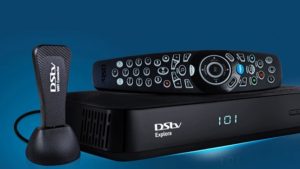Electricity is a necessity in every household, but choosing between prepaid vs postpaid electricity can significantly impact how much you spend each month. Each system has unique benefits and drawbacks, and understanding these can help you decide which option suits your needs best.
Let’s break down the differences between prepaid and postpaid electricity, analyze their costs, and determine which saves you more money.
What is Prepaid Electricity?
Prepaid electricity works on a pay-as-you-go system. You purchase electricity upfront, and your consumption is deducted from your balance as you use it. This system is popular across South Africa, especially in areas looking to improve revenue collection and encourage energy efficiency.
Advantages of Prepaid Electricity
- Budget Control: Prepaid electricity helps you manage your expenses since you can only use what you’ve already paid for.
- No Surprise Bills: With prepaid electricity, there’s no risk of receiving an unexpected bill at the end of the month.
- Encourages Energy Awareness: Watching your prepaid electricity units decrease in real-time encourages mindful usage and reduces waste.
- No Debt Accumulation: Prepaid electricity eliminates the risk of overdue bills or disconnections due to unpaid balances.
- Convenience of Top-Ups: You can easily buy prepaid electricity online, at retailers, or via mobile apps.
Disadvantages of Prepaid Electricity
- Initial Costs: Installing a prepaid meter can be costly, particularly if you’re transitioning from a postpaid system.
- Potential Inconvenience: Running out of prepaid electricity can leave you without power until you top up.
- Immediate Impact of Price Changes: Prepaid users feel the impact of price hikes instantly, as they pay the current rate at every purchase.
What is Postpaid Electricity?
In contrast, postpaid electricity allows you to use electricity throughout the month and pay a bill at the end. Your monthly bill is based on your consumption and includes additional charges such as administrative fees.
Advantages of Postpaid Electricity
- Convenience: There’s no need to monitor your electricity balance; you simply pay your bill once a month.
- Predictability: Some postpaid plans offer fixed rates, making it easier to budget for electricity costs.
- No Immediate Disconnections: If you’re late with your payment, many providers allow a grace period before cutting off your service.
Disadvantages of Postpaid Electricity
- Risk of High Bills: With postpaid electricity, you may face unexpectedly high bills if your consumption increases.
- Less Usage Awareness: Postpaid systems don’t encourage active monitoring of electricity consumption.
- Debt Risk: Unpaid postpaid electricity bills can accumulate, leading to financial strain and potential disconnections.
- Additional Fees: Many postpaid accounts include administrative and late payment charges, increasing your total costs.
News: City Power Disconnects 120 Homes for Prepaid Meter Bypass, Issues R14,000 Fines
Prepaid vs Postpaid Electricity: Cost Comparison
When it comes to cost savings, the choice between prepaid vs postpaid electricity depends on your lifestyle, consumption habits, and financial goals. Let’s compare the two options in key areas:
1. Budgeting and Spending Control
Prepaid electricity allows you to stick to a budget, as you can decide how much electricity to purchase. Postpaid electricity, on the other hand, often results in surprise bills that can disrupt your financial planning.
Winner: Prepaid Electricity
2. Monitoring Energy Usage
Prepaid electricity meters provide real-time feedback on your consumption, encouraging energy-saving habits. In contrast, postpaid systems don’t offer the same level of transparency.
Winner: Prepaid Electricity
3. Costs Over Time
The price of electricity units is generally similar for prepaid and postpaid systems. However, prepaid systems save you money by eliminating late payment penalties and administrative fees often associated with postpaid electricity accounts.
Winner: Prepaid Electricity
4. Convenience
Postpaid electricity is more convenient for users who prefer a hands-off approach. Prepaid systems require you to monitor your balance and recharge frequently, which can be inconvenient if you forget to top up.
Winner: Postpaid Electricity
5. Initial Costs
Installing a prepaid meter can be an upfront expense, making it less appealing for households on a tight budget. Postpaid systems usually don’t require additional setup costs.
Winner: Postpaid Electricity
Prepaid vs Postpaid Electricity: Which is Right for You?
To decide between prepaid vs postpaid electricity, consider your financial situation, energy habits, and personal preferences:
- Prepaid Electricity is ideal if you:
- Need strict control over your spending.
- Want to avoid debt or late payment penalties.
- Are committed to monitoring and reducing your energy usage.
- Postpaid Electricity is better if you:
- Prefer convenience and don’t want to worry about recharging.
- Don’t mind occasional fluctuations in your bill.
- Are okay with the risk of penalties for late payments.
Money-Saving Tips for Both Systems
Whether you choose prepaid vs postpaid electricity, you can save money by adopting these energy-efficient practices:
- Switch Off Appliances: Turn off lights, TVs, and other devices when not in use.
- Use Energy-Efficient Devices: Invest in LED bulbs, energy-efficient fridges, and washing machines.
- Optimize Heating and Cooling: Use fans or blankets instead of power-hungry heaters and air conditioners.
- Avoid Standby Mode: Unplug appliances that aren’t in use, as they can consume electricity even when off.
- Take Advantage of Off-Peak Rates: If available, use heavy appliances during off-peak hours when electricity rates are lower.
Related: Electricity Saving Tips for Low-Income Households in 2025
Choosing between prepaid vs postpaid electricity boils down to your priorities. If you value control, transparency, and avoiding debt, prepaid electricity is the clear winner. However, if you prioritize convenience and don’t mind the occasional surprise bill, postpaid electricity might be more suitable. Assess your household’s needs, and choose the system that aligns with your budget and lifestyle.










